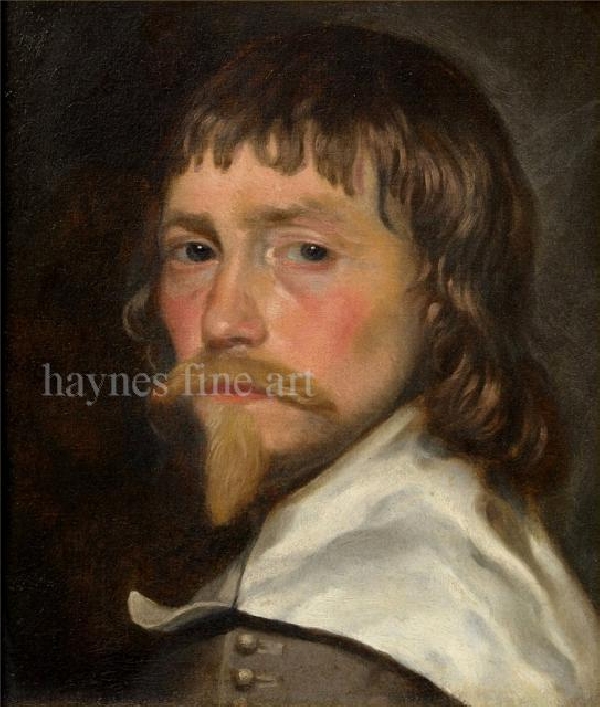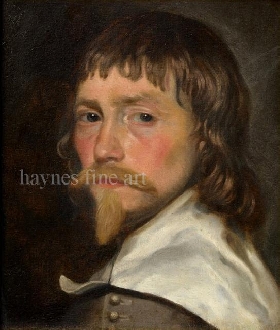Artists Biography
Sir Anthony Van Dyck.
Flemish 1599
Van Dyck was born on 22 March 1599, in Antwerp. The son of a rich silk merchant his precocious artistic talent was already obvious at eleven years of age, when he was apprenticed to the Flemish historical painter Hendrik van Balen. Van Dyck was admitted to the Antwerp guild of painters in 1618 just before his nineteenth Birthday. He spent the next two years as a member of the workshop of the Flemish painter Peter Paul Rubens, also in Antwerp. Van Dyck’s work during this period is in the lush, exuberant style of Rubens, and several paintings attributed to Rubens have since been ascribed to van Dyck.
From 1620 to 1627 van Dyck traveled in Italy, where he was in great demand as a portraitist and where he developed his maturing style. He toned down the Flemish robustness of his early work to concentrate on a more dignified, elegant manner. In his portraits of Italian aristocrats (men on prancing horses, ladies in black gowns) he created idealized figures with proud, erect stances, slender figures, and the famous expressive “van Dyck” hands. Influenced by the great Venetian painters Titian, Paolo, Veronese and Giovanni Bellini, van Dyck adopted colours of great richness and jewel-like purity. No other painter of the age surpassed van Dyck at portraying the shimmering whites of satin, the smooth blues of silk, or the rich crimsons of velvet. He was the quintessential painter of aristocracy, and was particularly successful in Genoa. There he showed himself capable of creating brilliantly accurate likenesses of his subjects, whilst developing a repertoire of portrait types that served him well in his later work at the court of Charles I of England.
During the years of 1627 to 1632, van Dyck worked as a portraitist and a painter of church pictures. In 1632 he settled in London as chief court painter to King Charles I, who knighted him shortly after his arrival. Van Dyck painted most of the English aristocracy of the time, and his style became lighter and more luminous, with thinner paint and more sparkling highlights in gold and silver. At the same time, his portraits occasionally showed a certain hastiness or superficiality as he hurried to satisfy his flood of commissions. In 1635 van Dyck painted his masterpiece, Charles I in Hunting Dress, which can be found in the Louvre, Paris, a standing figure emphasizing the haughty grace of the monarch.
Van Dyck was one of the most influential 17th Century painters. He set a new style for Flemish Art and founded the English school of painting; the portraitists Sir Joshua Reynolds and Thomas Gainsborough of that school were his artistic heirs.
Van Dyck died in London on 09 December 1641.



